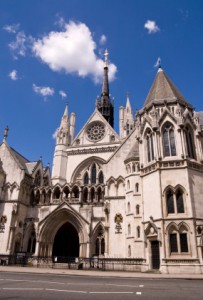Nine partners who left Halliwells shortly before it collapsed have won a High Court declaration that liquidators cannot pursue them for £125,000 each in alleged overdrawings.
HHJ Hodge QC, sitting as a High Court judge, found that the retirement deed the fixed-share partners signed in March 2010 so as to leave and set up the Sheffield office of Kennedys protected them from facing any claims to recover monies paid on account of profits and monies paid by Halliwells to HMRC.
In a ruling from July published yesterday, Judge Hodge said the wording of the deed, and its effect, “are clear”, despite strenuous attempts by counsel for Halliwells’ liquidators to impute other meanings.
He said: “In my judgment, the court should not readily accept that professional draftsmen and parties, all solicitors – Halliwells, Lewis Silkin [who advised the partners on the retirement deed] and Kennedys – have all made linguistic mistakes, particularly in a series of formal documents in common form, all intended to regulate, and to govern, the departure of fixed share members from a solicitors’ LLP.”
The application by Steven Fennell was used as a test case for the other eight partners, who all agreed to be bound by the decision.
The judge found that Mr Fennell’s decision to leave Halliwells was “motivated by a variety of reasons, although a common factor with those others who left was dissatisfaction at the way in which the LLP was being managed, and what Kennedys had to offer”.
Lewis Silkin did not act for Mr Fennell in the case, but in a recently published article on the ruling on the firm’s website, Clive Greenwood, its joint head of partnership and LLP, wrote: “The liquidator argued that the retirement deed should not be construed so as to prefer the personal interests of a fixed share member of the LLP (an insider) at the expense of the interests of creditors of the LLP (who were outsiders); in other words, former members should not be entitled to retain money which, if returned, could be distributed by the liquidator for the benefit of the LLP’s unsecured creditors.
“This suggestion was rejected by the judge who said that in cases such as this, the interests of creditors would be sufficiently protected, where appropriate, by amongst other things ‘a misfeasance claim against the relevant decision makers of the LLP – here the board – for breach of duty’…
“Pending the outcome of an appeal it is likely that the decision will increase the determination of retiring members, and their advisers, to obtain full and final settlement terms which give protection against claims by liquidators but, managing partners and members of management boards should keep in mind the duties they owe to the LLP and the potential for personal liability – and take great care over the terms on which members are allowed to retire.”
The ruling also set out the current state of play in untangling the affairs of Halliwells, which went into administration in July 2010, and into compulsory winding up in January 2012.
The Royal Bank of Scotland is a secured creditor with a debt of some £17.7m. There is an “estimated deficiency as regards unsecured creditors” of £203m.
The principal assets of Halliwells are claims (or possible claims) against former partners/members of the LLP, including: claims for overdrawn current accounts and tax reserve accounts against 150 members (which included the nine in the case); claims against 32 former members for recovery of a substantial reverse premium; and possible liquidators’ claims against approximately 150 members under various provisions of the 1986 Insolvency Act.















Leave a Comment